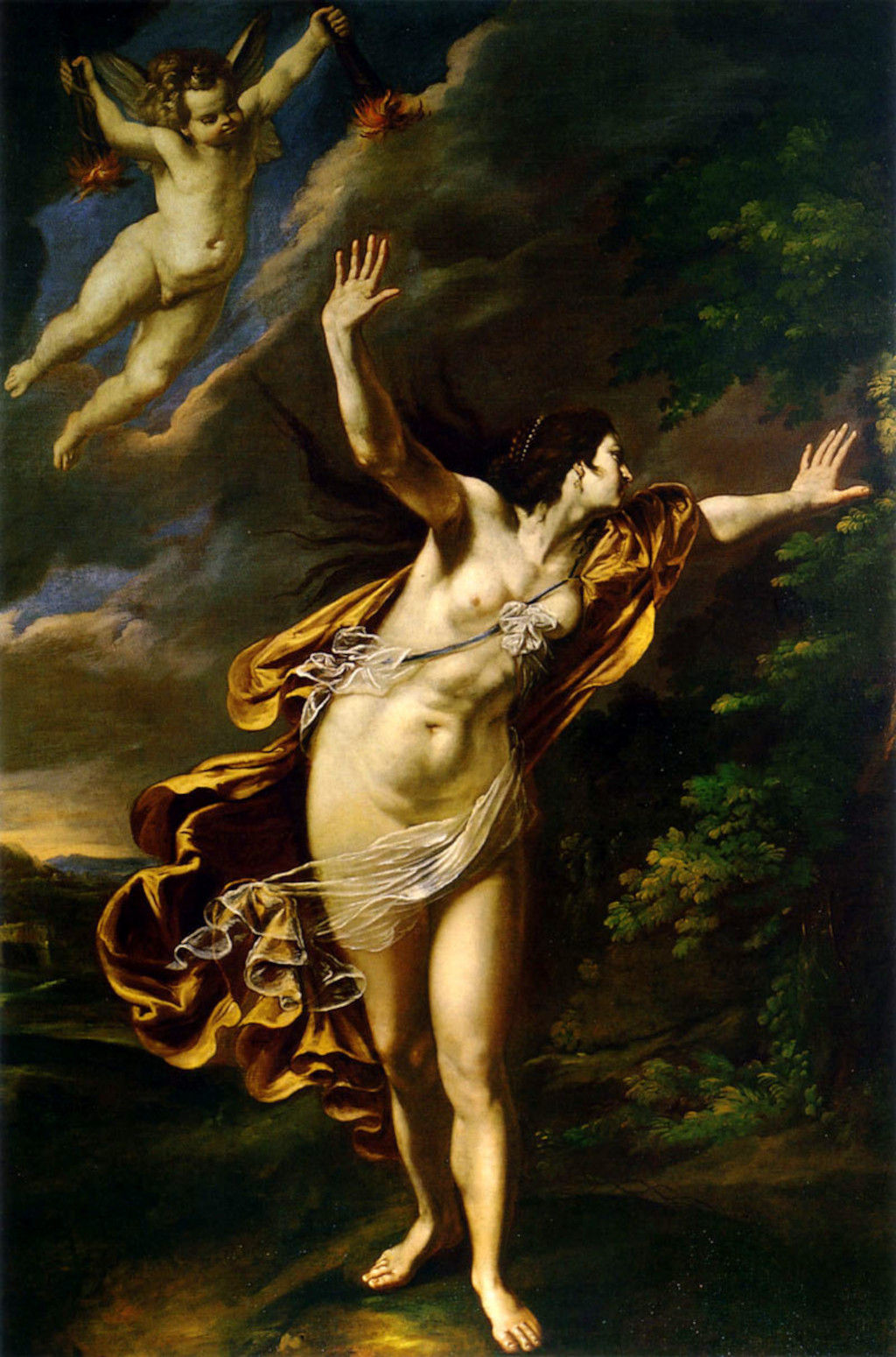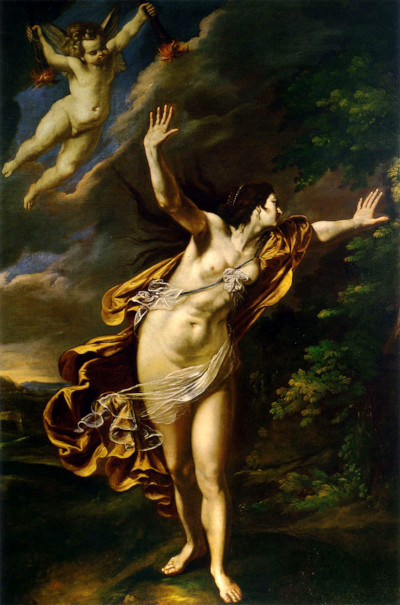Aurora is dated to around circa 1625-1627 and is one of Artemisia Gentileschi's largest artworks. Its theme is derived from Roman mythology.
This dramatic scene is amongst the artist's most impactful creations. We find the goddess representing beauty, alongside the rising of the sun. Gentileschi was a master of the female portrait and took inspiration from mythology several times, whilst also touching on religion and secular work in other examples.
The emotions found within piece are delivered in a bold manner and entirely typical of the Baroque era. This was an artist who took the achievements of Caravaggio and added her own innovations, both in terms of painting technique, but also content. She had a better understanding of the female portrait than her male counterparts and would be promoted by scholars as a specialist within that field, even though she also painted men as well.
Description
Here, in front of us, is a huge canvas, stretching to over two metres in height. Aurora, the Roman goddess of dawn, is placed centrally within the composition and has her arms outstretched. Her clothes are turbulently thrown around behind her exposed body, and she looks away to the right. Her physique is relatively slim, and bright light is used to highlight her prominence within this painting.
The sky rises in the background, which is a direct connection to the theme of Aurora herself, who represents this within Roman mythology. Gentileschi colours the lower part of the sky with a golden tone to bring the theme of Aurora to a modern audience. The rest of the background is considerably darker, helping to increase our focus on the key elements of the portrait.
Some have argued that this piece loses some of Gentileschi's stylistic connection to Caravaggio, but elements of the period as a whole as still here to see. In actual fact, one might even feel a comparison with the work of Greek painter El Greco, such as with the outstretched arms and dramatic atmosphere.
Who was Aurora?
Aurora was a goddess who represented dusk, and most artistic depictions of her would include the sun appropriately as a metaphor. Her role was to pronounce the rising of the sun every morning, which she would do by flying around in the sky. Traditionally, western artists have depicted her as a beautiful, slim woman, and Artemisia does exactly that here.
Most other depictions of Aurora are actually much brighter and lighter in tone, though that would not have suited the Italian female painter's style which was more in line, broadly, with the earlier works of Caravaggio and related artists in his circle.
Other Artistic Depictions of Aurora
Aurora appears within art from the 17th to 19th century fairly regularly, as with many other themes derived from Greem and Roman mythology. Notable examples include L'Aurore by William-Adolphe Bouguereau which arrived in 1881, and was clearly a more delicate, contemporary style than that used by Artemisia.
Bouguereau also completed Evening Mood in a similar vein, and he should also be considered a master of the female form. François Boucher and Gerard de Lairesse also completed notable depictions of Aurora, taking the same theme as Gentileschi, but delivering it within their own period's artistic formula.
Large Image of Aurora
We have added a larger representation of the original painting below, giving more detail from this stunning, but lesser known piece. This item has remained within her oeuvre for longer than many, and its provenance dates back all the way to the 17th century.
 Aurora
Aurora




